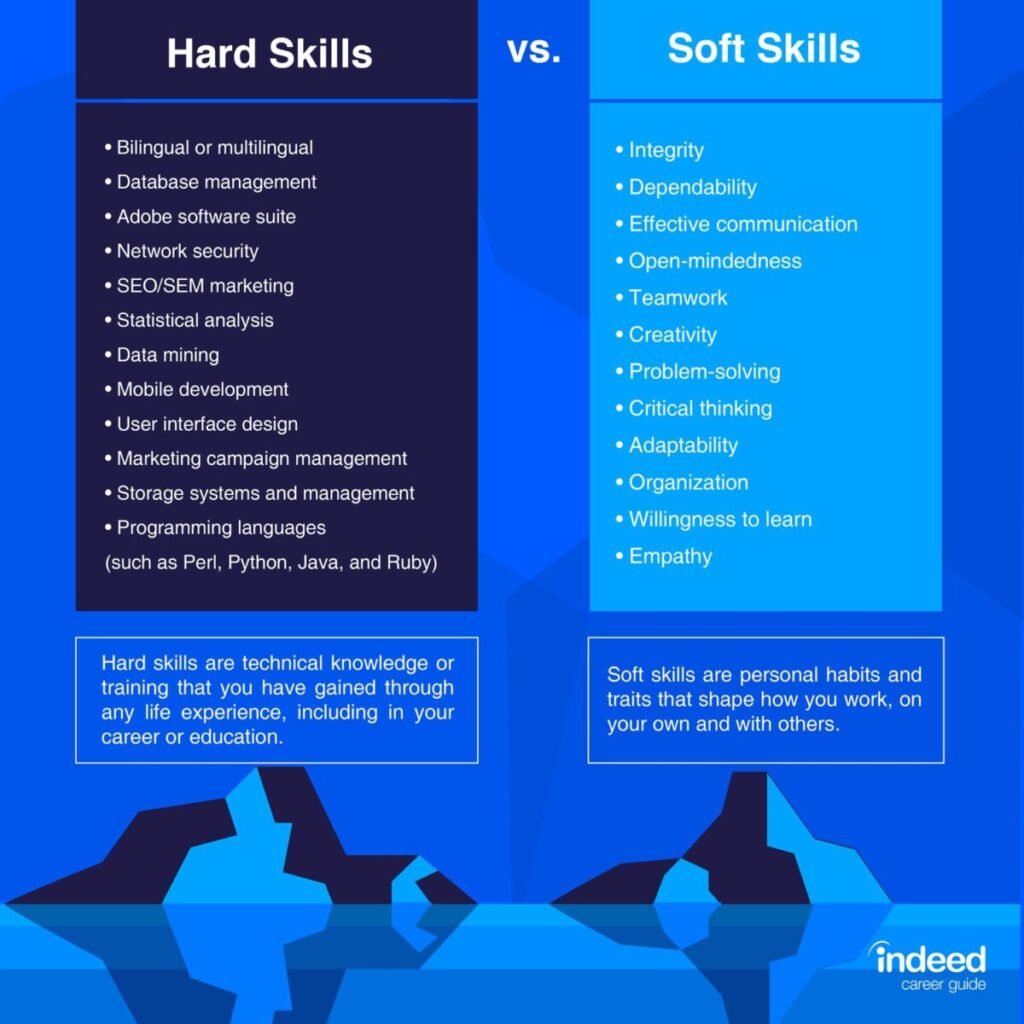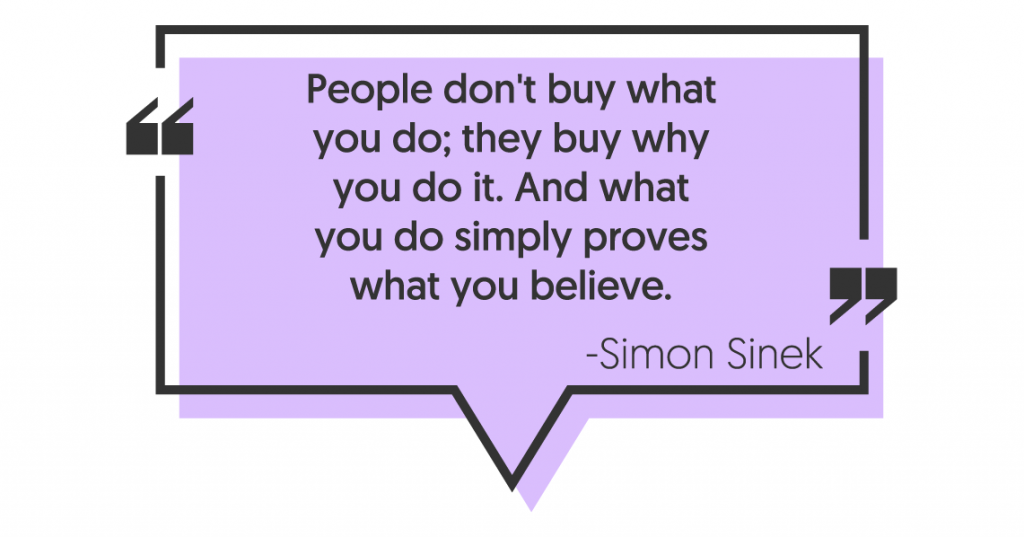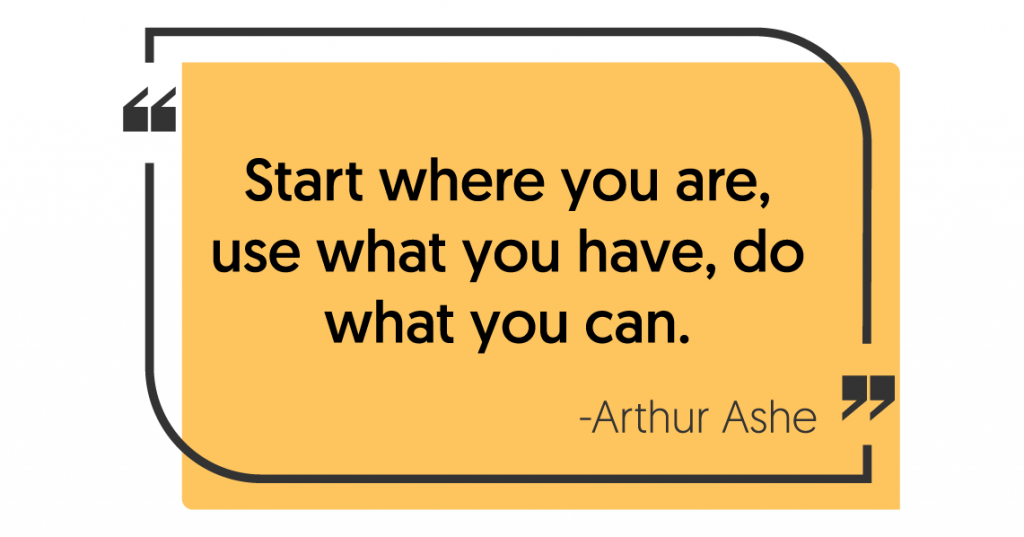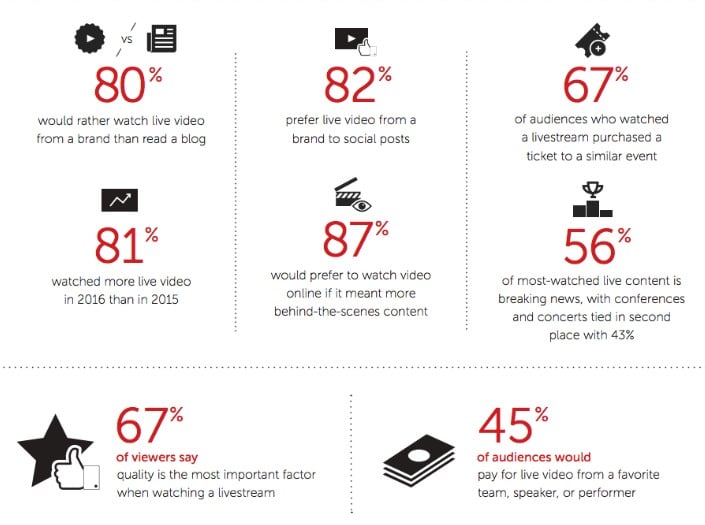As the world begins to pivot online, catalysed by the recent global pandemic, having a strong personal brand and a presence online is more important than ever. Whether we like it or not, everyone has a personal brand; if you’re reading this article, it’s likely that you have a profile on at least two social media platforms and you might even have your own website. That right there, is your personal brand. In an increasingly digital age, having a strong personal brand is becoming vital if you are to succeed in the online space; TikTok, YouTube and Instagram influencers have demonstrated the speed at which a personal brand can be built and have impact. But as we navigate our way through 2025, we are noticing a shift towards consumers’ desire for authenticity and honesty. People are desperate for change; they aren’t interested in the filtered, edited version of you. They want the real, open and honest you.
How to Build Your Personal Brand:
So, here’s my five steps which will guide you through how to build your personal brand:
Start with a Purpose
The first step in building your personal brand and to be honest, with any project at all, is to gain clarity as to what your mission, vision, and goals are. In today’s world, people follow those who inspire them, the people who believe what they believe. Because of the ever-changing landscape of business in this modern world we live in, it’s highly important that you understand and communicate exactly who you are, who you serve, and what you can bring to the table.
Identify your WHY, which, in Simon Sinek’s words, is who you truly are and not who you aspire to be.
Don’t start your personal brand just for the sake of doing it. Brands that remain superficial, that don’t share their vulnerabilities or their truth rarely create a real bond with those who follow them.
In order for you to really uncover your true purpose and values, it’s important to have a clear understanding of what moves you and what moves your followers.
So remember: step 1 is to start with a clear and authentic purpose.
Define a clear niche
Imagine being at a party, with people you haven’t met before. When meeting new people, do you know exactly how to introduce yourself in a way that enables the other person to understand, with clarity, who you are and what you do? Or do you struggle with it?
With a clear, defined niche, you are guaranteed to be able to communicate effectively who you are, who you serve, and what you do.
So how exactly do you identify your niche? I’ve broken the process down into 5 simple points:
What you love
Building a personal brand should come from a place of love. It shouldn’t be borne out of something that’s trendy or shiny. Your personal brand is ideally something that you love, something you enjoy, something that sparks your passion.
What you’re best at
Think of that one thing your friends or family members always come to you to ask help for. What’s that something that makes you feel alive and in flow whenever you’re doing it? What do you always get compliments about? What do your friends say about you when you’re not there?
Knowing what you’re best at is crucial in building a strong brand. This is how to serve others, this is how to help solve people’s problems… by doing the thing you’re best.
➡️ Action Step: Take assessments like StrengthsFinder, VIA Character Strengths, or 16Personalities to uncover your top skills and traits. Then, ask five people who know you well what they think your natural strengths are.
Draw four quadrants that you can fill out with your soft and hard skills - this will help you identify your strengths.
➡️ Action Step: Create a simple grid with columns for “Hard Skills,” “Soft Skills,” “Things I Love,” and “Things People Ask Me For.” Spend 10–15 minutes populating each quadrant. Patterns will start to emerge.

What makes you unique
Having a clear idea of what sets you apart from the rest (well, the competition) enables you to position yourself better and cement your authority in your industry.
Remember that we now live in the digital world, and we’re being bombarded with information from the moment we log on to our news feeds. Aim to grab attention, to be interesting, to deliver value.
➡️ Action Step: Make a list of 3–5 things that differentiate you—your background, skills, lived experiences, or unique perspectives. Then refine it into a 1–2 sentence “uniqueness statement” you can include in bios or intros.
We’ve been told that our attention span has shortened, but personally, I don’t believe that to be true. We see people sitting through episodes of Netflix shows, so there’s definitely some attention there. What this teaches us is that the quality of your content matters, the value of your message matters.
Your experience and qualifications
Without a doubt, having something to show for supersedes any press release or promotion. When you have clarity it builds your self-confidence; credibility develops others’ confidence in you. Always aim to deliver and amplify your achievements. It’s not about being cocky; it’s about celebrating your wins and successes with those who genuinely root for you!
➡️ Action Step: Create a “highlight reel” document where you list every relevant job, certification, award, or big result you've delivered. Look for recurring themes that point toward a focused niche.
Write all your accomplishments down and take a look at how these could tie into what your niche is.
Your one “thing”
Now it’s time for you really narrow down and hyperfocus on your ONE THING. Most of the time, we want to be everything for everyone… we want to do everything at once and often get distracted by all the “shiny” things.
➡️ Action Step: Write a single-sentence niche statement using this formula: “I help [specific audience] achieve [specific result] through [specific skill or method].” Then test it with people in your network to see if it lands clearly.
As early as now, draw a line in the sand. Be very specific with what you can do, what you can’t, who you serve, who you don’t, what you care about, and what you can’t put time and effort into. Do this and your niche will unveil itself to you.
Create to Serve
If I ask you now who your ideal customer is… would you be able to describe him or her to me with precision and clarity? Can you answer these questions?
- What’s her/his name?
- What’s their job?
- Which part of town do they live?
What do they do during their free time?
Building a personal brand requires a lot of attention and focus on who your target audience is. This allows you to serve them better, by knowing what their specific needs and pain points are.
Creating to serve is an element in your personal branding that allows you to understand that all of your efforts should be about the people who need your services, your product, your expertise.
The Internet has allowed end users to take more of the centre stage when it comes to creating and designing new things. Personal branding is no exception. Turn your focus toward your audience and away from yourself.
Communicate Clearly
Did you know that the human attention span online is now just eight seconds? To put that into perspective, Goldfish have an attention span of nine seconds. Quite worrying, isn’t it, that we can’t focus our attention for longer than a goldfish?
Essentially, this means that you have fewer than seven seconds to grab someone's attention and get across as much as you can about what you do and whom you serve as quickly and as clearly as possible.
Now that you understand your customer, who they are and what their pains are, you can communicate with them effectively. This enables you to attract your ideal customer and filter out the ones you don’t want in under seven seconds
When I work with my clients, I take them through five steps to create different communication statements: Your core message, your tagline, your slogan, your statement and your story. Once you’ve written these you will have enough clear communication to go on every social media site, every website, every speaker bio. Think of them as a toolkit of messages:
Your core message
First, you need to start by creating your core message. This is something you might use to introduce yourself at a networking event or at the start of the speech and is designed to accurately portray everything you need it to in one sentence. Your core message should go something like this:
- I (verb) (dream customer)
- To…(product/service/value you give)
- So that…(the tangible outcome/happy ending)
Your tagline
Your tagline is a shorter, more impactful version of your core message. It’s the kind of thing you’ll use on a social media bio or the front page of your website. Start with your core message and play around with it until its punchier. Aim for around five to seven words; it should be short, sharp and to the point.
Your slogan
A slogan is a short and striking or memorable phrase used in advertising. It’s even shorter than a tagline, often just a few words. Slogans rarely say much about what the company does but should be motivational and memorable; take Nike’s slogan for example, ‘just do it’.
Your statement
The fourth communication statement is a little longer, offering more information. An empathy statement is something you may use in a longer bio, for example on LinedIn or to introduce a sales brochure. The aim of this is to position yourself as someone who understands their customer’s pain and has a solution to it. It needs to include:
- Your customers problem
- Your solution
- A tangible outcome or ‘happy ending’
Your story
The final communication statement you’ll need is your story. Don’t panic, you’re actually going to use a lot of the information you’ve already written. This is where you’ll see the true value of the toolkit you’ve created. Your story needs to include:
- I believe…
- My mission…
- Customer problem…
- My solution…
- Credibility…
- Happy ending (tangible outcome people get from working with you/consuming your content)
Your goal with these communication statements is to have created the clearest, catchiest sentences you possibly can to engage your target audience.
Create authentic content
One of the biggest personal branding trends we’re seeing in 2025 is authenticity, honesty and openness. With the internet growing at an exponential rate, there is a wealth of information available. But, it’s somewhat lacking when it comes to authenticity; it’s hardly surprising that a recent survey reported that only 18% of consumers say they trust business leaders to be truthful. That’s why it’s so important that your content is real and genuine.
So much of the content we see is overly curated and seemingly ‘perfect’; there’s so many apps and tools we can use to edit our content and disguise our true selves behind filters, photoshop and posing for hours to get the right photo. People want change, they are desperate for authentic content and realness.
Authenticity is being vulnerable, having values, and being true to them. You can leverage this to build trust with your target audience and become known as an expert in your niche as the real, authentic you.
Here are some ways to create authentic content that resonates with your audience:
1. Tell your story and showcase your voice. As we touched upon earlier...ask yourself, what is the ‘why’ behind your brand? Tell your audience this through engaging and authentic content. Be real and be honest.
2. Use video content. Many of you will find this a scary thing to do...and so did I when I first started creating video content. But don’t let the fear of what others may think hold you back...it doesn’t have to be perfect, it just needs to be authentic. The modern consumer wants and expects to see video content, and video content keeps audiences engaged longer than any other form of content. This includes live-stream video too, with 80% of respondents to a LiveStream survey saying they’d rather watch live video than read a blog post. So, if you’re yet to bite the bullet and jump on the video trend, I highly recommend that you do! It’s not as scary as it sounds, I promise.
3. Post photos of yourself. Photos of people often get far more engagement than graphics. I’m by no means suggesting that you ditch your brand graphics, but make sure you’re posting a combination of the two! People want to see real people and real stories. Let your audience get to know you, develop a personal connection and build a relationship of trust.
I hope you’ve found these steps helpful and that I’ve inspired you to build your personal brand! If you’d like to find out where you’re currently at with your personal brand then I invite you to take this free personal branding quiz to find out your score and how you could improve! https://www.powerfulleaders.co/scorecard
Build a Brand on Social Media
Let’s Talk LinkedIn
You might think of LinkedIn as a boring job board—but it’s so much more than that. Think of it like your personal PR channel, networking lounge, and portfolio all in one. If you’re serious about building your brand, this is where you show up.
But here’s the catch: LinkedIn doesn’t work if you only show up when you’re looking for a job. It works when you show up with intention. Regularly. Authentically.
Start with these 3 steps:
1. Optimize Your Profile Like a Landing Page
-
Your headline should say who you help, what you help them do, and how.
Example: “I help creative entrepreneurs design standout brands that sell—without selling out.”
-
Your about section? That’s your chance to tell your story. Not your resume. Your why. Let people know what drives you, what you stand for, and what kind of results you deliver.
-
And please, don’t skip the banner image. Use it to show off your vibe: add a tagline, brand color, even a call to action.
2. Start Posting Weekly
You don’t need to go viral. You need to be visible.
-
Share lessons from your work.
-
Share client wins (with permission).
-
Share things you wish people knew in your industry.
One creator shared what happened after posting every day for two weeks—and the takeaways were eye-opening. First, you save time by letting the platform work for you. Instead of chasing leads, you attract them. Second, opportunities start finding you. Whether it’s a podcast invite, a collaboration request, or a job offer, LinkedIn becomes a networking magnet. In their words, 50–70% of people who engaged with their posts were new potential connections they hadn’t even met before.
Third—and this is key—it’s not about likes. Sometimes, a post that gets fewer thumbs up can have more impact. Someone might read, not engage, and still send you a DM weeks later with a job or client offer.
So keep it real. Be consistent. Post even when no one claps. Your future network is watching, and the right post will find the right person at the right time.
3. Engage Like a Human
No “Great post 👏👏” nonsense. That’s not connection—that’s filler. If you want LinkedIn to work for you, you have to engage like a real human. That means reading. Reflecting. Responding with something that actually moves the conversation forward.
Take a note from Mindi Ramsey, a strategist who helps experts grow their networks. She reminds us: people notice when you care. LinkedIn is full of AI-generated comments and oversaturated cheerleading. Be the person who shows up differently. When you read a post, don’t just react—contribute. Add a unique takeaway, share a personal anecdote, or ask a smart follow-up question. The algorithm favors early, meaningful engagement, and humans favor… well, actual humans.
Avoid the “tag everyone” tactic just to boost visibility. Over-tagging comes off as self-serving, and it’s the fastest way to lose credibility. Instead, engage in ways that build trust: comment early, ask real questions, and if the exchange feels promising—take it to DMs.
And keep this in mind: not all metrics make sense. One creator recently shared their confusion after spotting negative engagement in LinkedIn analytics with no clear cause. It’s a reminder—don’t chase numbers, chase real relationships. The best engagement might not always go viral, but it will go deep.
So next time you scroll? Pause. Read. Think. Then say something that matters.
Maintain Visual and Verbal Consistency - Build a Branding Book
You know how when you see a yellow background with bold black text you immediately think: Oh, that’s from that one guy…?
That’s what a consistent brand does. It makes you recognizable before someone even reads your name.
So how do you actually do this?
Step 1: Build a Mini Brand Book (Yes, Even Just for You)
You don’t need to be a Fortune 500 company to have a brand book. In fact, if you're building a personal brand, this is your fastest way to scale consistency across platforms.
Here’s what to include:
🧠 Brand Voice Guide
Creating a Brand Voice Guide is essential for ensuring consistency across every piece of content your brand produces—whether it's a social caption, a blog post, or a customer email. Start by defining your brand’s core personality traits. Are you bold and witty, calm and authoritative, playful and curious? Choose 3–5 adjectives that capture how your brand should sound. Then, break each down into do’s and don’ts with examples. For instance, if your voice is “friendly,” you might say: “Do use casual contractions and warm greetings. Don’t sound overly formal or robotic.” Next, identify how your voice flexes depending on context. A product launch email might lean more confident and enthusiastic, while a customer support message should emphasize empathy and clarity. Include tone adaptations for different scenarios, such as launching a product vs. addressing a crisis. Finally, compile common phrases, brand-specific terminology, emoji use rules (if applicable), and preferred grammar or formatting choices. Your Brand Voice Guide should be a living document—easy to share, update, and reference. The goal isn’t to restrict your team’s creativity, but to give them a solid foundation that makes every message feel unmistakably you. When your voice is clear, consistent, and human, your brand becomes unforgettable.
-
Are you witty or warm? Bold or humble?
-
Choose 3 adjectives to describe your voice.
Example: “Clear, honest, casually confident.”
Practical Tip: Document your brand voice by writing sample posts or messages in your chosen tone. This helps in maintaining consistency across different platforms.
🎨 Visual Branding
Your visual branding is the silent ambassador of your personal or business identity—it speaks volumes before a single word is read. Start with clarity: define your brand’s personality. Are you bold and disruptive? Calm and minimal? Luxurious and refined? Your colors, fonts, and imagery should reflect that. Stick to 2–3 brand colors and 1–2 fonts that align with your tone—consistency builds recognition. Next, create templates for social posts, carousels, and presentations so every touchpoint looks like you. Don’t just rely on pretty design; think strategically. Use visuals to guide the viewer’s attention—where do you want their eyes to land first? What feeling do you want them to walk away with?
Strong visual branding also lives beyond the logo. Think about your photography style, the way you crop images, your use of whitespace, icons, even the layout of your LinkedIn banner or your Instagram grid. It should feel intentional. And lastly, audit your visual presence regularly. If it looks scattered or unpolished, people won’t trust the value you offer—no matter how great your work is. In a world of scrolls and seconds, cohesive visual branding makes sure your presence sticks in people’s minds, even when they’re not consciously paying attention.
-
Pick your color palette (3-5 colors max)
-
Choose 1-2 fonts (Canva or Google Fonts make this easy)
-
Select your photo style (bright? moody? minimal?)
-
Create a few graphic templates using Canva
Jenna Kutcher, a digital marketing educator and host of The Goal Digger Podcast, has built a visual brand that’s instantly recognizable across platforms. Her color palette is soft and warm—think blush pinks, sandy neutrals, and sunlit tones. Her fonts are modern but approachable, mirroring her brand voice: casual, motivational, and real.
What makes her visual branding so effective isn’t just the aesthetics—it’s the consistency. Whether you land on her Instagram, website, course materials, or podcast cover, everything looks and feels like her. She uses similar photo styles (light-filled, candid, often with her family or laptop in hand), maintains a consistent filter across images, and incorporates handwritten-style accents in her graphics to add a personal touch.
Even her wardrobe choices in photos align with her brand palette—she is her brand.
This consistency has paid off. Audiences recognize her content instantly, feel a strong sense of trust, and engage more deeply. Her visuals tell a story before she ever says a word—and that’s exactly what great visual branding does.
📚 Tool tip: If you're a beginner, use Canva Brand Kit to save all your colors, fonts, and logos in one place.
📎 Your Toolkit (For Consistent Output)
-
Canva: for branded social graphics
-
Notion or Google Docs: store your messaging framework
-
Grammarly: to keep your tone consistent
-
Copy.ai: Generate content that aligns with your brand voice by inputting examples of your writing. The AI analyzes your style and helps produce consistent messaging across various platforms.
-
HubSpot's Brand Voice Tool: Define and apply your brand's unique voice across different content types, ensuring consistency in tone and style.
-
Junia AI: Maintain a consistent writing style by training the AI with your content. It helps generate new material that matches your established tone and language.
-
Jasper: Create written content that reflects your brand's voice by analyzing your existing materials. Jasper assists in producing consistent marketing copy, social media posts, and more.
-
BIGVU: For video content, BIGVU helps script and produce videos that maintain your brand's voice, ensuring consistency in visual and verbal messaging.
Create Your Messaging Cheat Sheet
Use the framework from earlier (core message, tagline, slogan, story). Store it in your brand book. Anytime you write a bio, update your LinkedIn, or pitch yourself—refer to it.
Practical Tip: Develop a one-page document that includes:
-
Core Message: A concise statement that encapsulates what you do and who you serve.
-
Tagline: A catchy phrase that communicates your brand's essence.
-
Elevator Pitch: A brief summary of your background and value proposition.
-
Brand Story: A narrative that connects your personal journey to your professional mission.
Tori Dunlap, founder of Her First $100K, maintains a clear and consistent message across her platforms, focusing on financial education for women. Her tagline, "Fighting the patriarchy by making you rich," succinctly conveys her mission and resonates with her audience.
Author Bio








